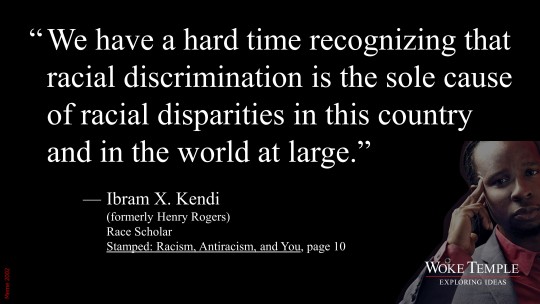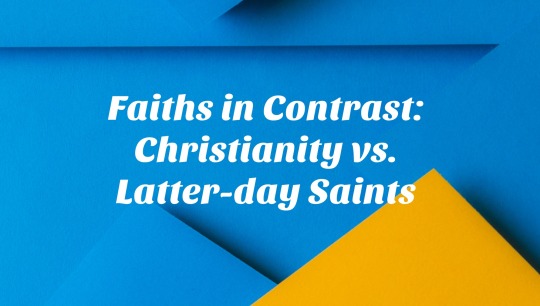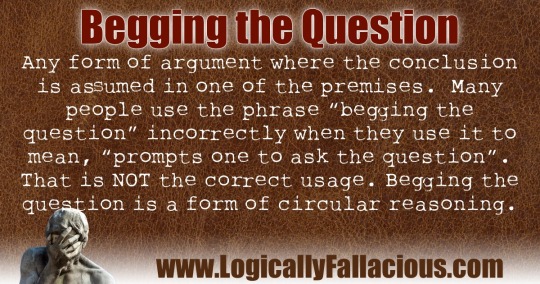#disparities
Photo



Translation: “God did it.”
This is creationism, faith promoted by a preacher masquerading as a “scholar.”
Our problems deserve better thought than quack scholarship. We deserve better scholars than academic clowns.
#The Woke Temple#Henry Rogers#Ibram X. Kendi#single cause fallacy#woke creationism#antiracism as religion#antiracism#woke fundamentalism#disparities#equity#fallacies#sophistry#causal reductionism#wokeness as religion#cult of woke#woke activism#wokeism#woke#intellectual clown#quack scholarship#religion is a mental illness
11 notes
·
View notes
Text
New report quantifies the size and ubiquity of the U.S. home appraisal gap

The “appraisal gap” – the tendency for homes in white neighborhoods to be given higher values than equivalent homes in minority neighborhoods – has attracted media attention in recent years. A new report led by UIC’s Junia Howell, visiting assistant professor in sociology, calculates the width of those disparities in cities across the United States, finding it present in all corners of the country and widening dramatically in recent years.
The research was featured in a graphics-heavy piece by Bloomberg City Lab, which highlighted that the gap was present in each of the top 30 metro areas. In the most expensive regions, such as Southern California and New York City, the gap exceeded $1 million between White and Black neighborhoods. In less expensive areas, such as Charleston, SC and San Antonio, TX, the absolute dollar difference was smaller, but the relative disparity was even higher. The study also found that diverse areas have higher appraisal inequity.
That’s despite the fact that the demand for diverse neighborhoods is high among people of color, Howell said. This tension affirms that unequal appraisals are not simply the result of supply and demand, Howell says, but instead reinforce racial hierarchies and assumptions that affect how appraisers assess comparable sales.
Read more at Bloomberg.com, and learn about Howell's organization for alternative appraisal approaches, eruka.
3 notes
·
View notes
Text

This is just horribly sad! Keep in mind, nurses keep most medical facilities running. Now think about how easy it is to pick up a phone and make a call to relay a patients concerns to a doctor.
Bottom line, we need more doctors. And we need them to gaf about patients.
6 notes
·
View notes
Text
Benefits of Culturally Tailored Exercise Programs
Did you know? Culturally tailored exercise programs and community fitness initiatives can help overcome barriers to physical activity and promote a culture of health and wellness within communities of color.
In many communities of color, access to fitness resources and culturally relevant exercise programs can be limited. By designing exercise initiatives that reflect the cultural preferences, traditions, and values of diverse communities, we can create inclusive spaces that empower individuals to prioritize their health and well-being.
Culturally tailored exercise programs not only make physical activity more accessible but also foster a sense of community, belonging, and support. By celebrating cultural diversity and honoring individual experiences, these initiatives inspire individuals to embrace healthy lifestyle choices and engage in regular exercise.
What are Culturally Tailored Exercise Programs:
Culturally tailored exercise programs are designed to resonate with the specific cultural preferences, traditions, and values of diverse communities.
Incorporating cultural dance styles such as salsa, hip-hop, African dance, or Bollywood into fitness classes can make exercise more enjoyable and accessible for individuals from diverse cultural backgrounds. These classes often include high-energy routines set to music, providing a fun and engaging workout experience.
Tai Chi and Qi Gong are ancient Chinese martial arts practices that focus on slow, deliberate movements and mindful breathing. Hosting outdoor Tai Chi or Qi Gong sessions in community parks or gardens can provide a peaceful and serene environment for individuals to connect with nature while improving their physical and mental well-being.
Yoga classes that incorporate cultural themes, such as Kundalini yoga, Ayurveda, or Hatha yoga, can appeal to individuals seeking a deeper connection to their cultural heritage while practicing mindfulness and relaxation techniques. These classes may include traditional yoga poses, meditation, and breathing exercises adapted to reflect cultural traditions.
Organizing community walking groups tailored to specific cultural interests or neighborhoods can promote physical activity while fostering social connections and community engagement. These groups may explore local landmarks, historical sites, or cultural attractions, providing participants with opportunities to learn, connect, and stay active together.
Hosting fitness events or challenges tied to cultural festivals or holidays can encourage participation and engagement within diverse communities. These events may include themed workouts, dance performances, healthy cooking demonstrations, and educational workshops, celebrating cultural traditions while promoting health and wellness.
Designing strength and conditioning programs tailored to the unique needs and interests of specific populations, such as seniors, women, or youth, can address common barriers to physical activity and promote inclusivity. These programs may incorporate culturally relevant activities, modifications, or adaptations to accommodate diverse fitness levels and abilities.
Mobile fitness units equipped with exercise equipment, instructional materials, and trained instructors can bring fitness opportunities directly to underserved communities, including rural areas or urban neighborhoods with limited access to fitness facilities. These units may offer a variety of fitness classes, workshops, and resources tailored to the needs of the local population.
By honoring cultural traditions, preferences, and values, these programs empower communities to prioritize their health and well-being while celebrating their unique identities.
At The Shamanic Goddess and the Holistic Professionals of Color Association (HPCA) Charlotte Chapter, we're committed to promoting health equity and wellness for all. Through culturally tailored exercise programs, we strive to empower individuals and communities to lead healthier, happier lives.
Join us in celebrating the power of culturally relevant fitness initiatives to promote holistic health and well-being within communities of color!
Dr. Deilen Michelle Villegas, Ph.D., DNM, - Board Certified Holistic Health Practitioner, Traumatic Stress Expert, Trauma Recovery and Behavioral Health Specialist.
#HolisticHealth#CommunityWellness#CulturalFitness#HealthEquity#NationalMinorityHealthMonth#EquityoverEquality#HarmonyoverDisparity#WeHealOurselves#WeHealOurCommunities#WeHealTogether#HealthisWealth#HolisticWellness#MindBodyBalance#Barriers#Disparities#Access#Traditions#BIPOC#Lifestyles#MarginalizedCommunities#MinorityHealth#Wellbeing
0 notes
Text
Serving Two Masters
Understanding Matthew 6:24 in Historical and Cultural Context
Historical Context: To truly grasp the depth of Jesus’s words in Matthew 6:24, we must delve into the historical backdrop of first-century Palestine. During this period, the region was under Roman rule, and socioeconomic disparities were prevalent. The Jewish population faced taxation, often burdened by the demands of both Roman…

View On WordPress
1 note
·
View note
Text
Can We Ban Inequality by Banning Words?
Daily writing promptIf you could permanently ban a word from general usage, which one would it be? Why?View all responses
The desire to permanently erase a word from existence is an understandable one, especially when that word carries some specific idea we do not like at all – in my case, it would be any word that brings with it the weight of hate, discrimination, or harmful ideology.
But,…

View On WordPress
#Buddhism#dailyprompt#dailyprompt-1859#disparities#equality#freedom#inclusion#inequality#justice#Language#linguistics#Philosophy#Raffaello Palandri#Stoicism#word
0 notes
Text
Faiths in Contrast: Christianity vs. Latter-day Saints
In comparing Christian theology with LDS (Latter-day Saints) beliefs, it’s imperative to recognise significant disparities in theological frameworks and interpretations of core Christian doctrines. While on the surface, both Christianity and Mormons may use similar terminology, such as “God,” “Jesus,” “atonement,” and “grace,” the underlying meanings and narratives diverge…

View On WordPress
#additional scriptures#atonement#Blogs#Brendon Naicker#Bristol church#bristolchurch#Christian Doctrine#Churches Unite#core Christian doctrines#Discernment#disparities#eternal progression#Faith#God#grace alone#humanity#interpretations#Jesus#Jesus Christ#joburgchurch#LDS beliefs#London City Church#narratives#pastors#Reformed theology#religious perspectives#salvation#Scripture#similarities#sovereignty
0 notes
Text
Where is A’ja Wilson’s signature shoe!? How many more historical seasons does she need to have to get one? She has peers with shoe deals that have not one thing to justify having one (no need to even name names) but sis has been a 2-time MVP, DPOY twice and now a Finals MVP and that’s just the tip of her accolades in the league! WITH a season that goes down in the history books for setting records & breaking records in scoring, rebounds, double-doubles etc. The shoe deal should’ve been already! Since last year at least. Nike, what are y’all doing?!
The commercials she should be in. Her face plastered on brand items.
(Look at all she’s done and has had to do to finally get this conversation going)
[A signature leg and arm sleeve too because she’s made that combo popular.]
When I tell you the disparities in sports sponsorships and endorsements for Black women athletes is still beyond ridiculous!
#wnba#A’ja Wilson#sports#basketball#endorsements#sponsorships#disparities#inequality#racism#Black women athletes
1 note
·
View note
Text
note - there were only 2 criteria for this list, artists had to be both:
1. considered popular and/or overplayed
2. heavily made fun of or meme'd on on tumblr
don't try and read any deeper than that bc I really couldn't care less about how otherwise comparable or not these artists are thanks, ok so nobody actually be an asshole about anyone elses music taste or the music in general but like ig idgaf if you have beef with the artists themselves lmao
*EDIT: I SAID BE NICE YOU INSUFFERABLE HIPSTERS FFS
#ive had this idea for a while and listen. listen. ik there are some disparate pulls on here#but they all meet the criteria#ok to rb
12K notes
·
View notes
Text
Disparities Persist Despite an Increase in Lung Cancer Screening Rates
0 notes
Text
Data Driven Conversations
This week I am talking to Sanjula Jain, PhD (@sanjula_jain), SVP Market Strategy & Chief Research Officer at Trilliant Health (@TrilliantHealth), a company focused on healthcare industry expertise, market research, and predictive analytics to create evidence-based direction for Healthcare.
Sanjula has like many of my guests an interesting background and origin story but in her case set her on a…

View On WordPress
#Big Data#claims#Communication#Data#dataset#datasets#decision#decision makers#disparities#Health#Healthcare#healthcare system#healthcare systems#hospital#Incremental#Incremental Healthcare#IncrementalHealth#industry#influence#information#leaders#Leadership#Medicaid#patient#payer#Policy#Population Health#populations#Public Policy#questions
0 notes
Photo




Translation: ‘When I see something bad, I assume the Devil did it.”
If you measure the IQ of 10,000 people and then sort and average their IQs by race, you’re going to find disparity. If you sort and average their IQs by hair color, you’re going to find disparity. If you sort and average their IQs by shoe size, nipple size, number of jobs they’ve had, the number of cars they’ve owned, or the number of bottles in their refrigerator, you’re going to find disparity. Some number of refrigerator bottles is going to correlate to a higher average IQ than others. It just is.
Now do the same again for any other attribute. Do income by number of refrigerator bottles, or height by the number of cars owned. One group is going to have the highest average income, or be the tallest on average.
Disparity is not in itself a problem, because all humans are different. Which is why any and every expectation of blanket “equity” is not just unrealistic but nonsensical. We’ve been misled by activists that any amount of disparity is evidence of unfairness (except the NBA).
Kendi doesn’t understand this, because his “field” (if we must), is not based on evidence or an actual understanding of statistics or society. That’s not by accident either. It’s the same reason Xians cite, but avoid understanding, the laws of thermodynamics - to do so gets in the way of the theology and mythology. Kendi is not a scholar, he’s a storyteller.
That’s why univariate takes are as much quack scholarship as the worst Xian apologetics. He’s basically Lee Strobel, a Xian who pretended to set out to figure out if there was a god, and - surprise, surprise - “found” the same god he already believed in.
For someone who puts the title “Dr.” in front of his stage name, he sure seems like an academic and intellectual fraud. Someone who wasn’t a complete fraud would know what sophistry is and would work to avoid it. Rather than not just leaning into it but basing his entire grift career on it.
#The Woke Temple#Henry Rogers#Ibram X. Kendi#quack scholarship#quackery#presuppositionalism#god of the gaps#disparities#argument from ignorance#intellectual fraud#academic fraud#fallacies#logical fallacies#circular reasoning#begging the question#causal reductionism#single cause fallacy#sophistry#wokeness as religion#woke activism#cult of woke#wokeism#woke#religion is a mental illness
11 notes
·
View notes
Text
AHA highlights physical activity as key to closing cardiovascular health disparities

Cardiovascular disease is the perennial leading cause of death in the United States, as well as a significant source of racial and ethnic health disparities. The low-hanging fruit for improving these statistics may be new approaches to promoting physical activity in under-resourced groups, according to a scientific statement from the American Heart Association.
Despite the well-known protective effects of exercise against cardiovascular disease and risk factors such as obesity and diabetes, less than 1 in 4 adults achieve the recommended 150 minutes of moderate activity per week. Lower physical activity has also been observed in many of the same groups – people above 65, women, Black and Hispanic adults, people with lower income and education – that show elevated rates of cardiovascular issues.
The AHA report, published in Circulation and written by a team including Eduardo Bustamante, assistant professor of kinesiology and nutrition at the UIC College of Applied Health Sciences, reviews the literature on physical activity across these groups and in different environments, such as urban vs. rural or different weather and air quality conditions. It also looks at the results of various strategies used to promote physical activity in these populations and settings.
The programs that were most effective engaged the community in designing interventions, created culturally appropriate materials and exercise options and used more audiovisual and interactive media, the authors wrote. They also called for more research on the long-term effectiveness of these programs and on the intersectionality with other barriers to exercise such as the built environment, cultural norms and lack of resources such as childcare.
“Increasing physical activity should be the cornerstone of our efforts to reduce inequities in cardiovascular health and health care,” the report concludes.
1 note
·
View note
Text

I’m currently looking for an angry black anyone to help me thru this current obstacle
2 notes
·
View notes
Text
Did You Know? Access to Green Spaces is Vital for Health
Did you know that access to green spaces and outdoor recreational activities is essential for physical and mental health? Yet, many communities of color face environmental injustices and limited access to parks and green spaces.
Green spaces, such as parks, forests, and gardens, offer numerous health benefits, including opportunities for exercise, stress reduction, and social connection. Spending time in nature has been shown to lower blood pressure, reduce stress levels, and improve mood and mental well-being.
However, communities of color often bear the brunt of environmental injustices, such as pollution, industrialization, and urban sprawl, which can lead to a lack of access to green spaces and outdoor amenities. This disparity not only affects physical health but also exacerbates mental health issues, including anxiety, depression, and social isolation.
According to the NIH Article, https://www.ncbi.nlm.nih.gov/pmc/articles/PMC8621109, there is a direct correlation between individuals who have limited access to green spaces and a decline in mental and physical well-being. Having green space available in urban spaces promotes individuals to want to be outside, and get active, the colors and the greenery help promote relaxation and relieve stress and anxiety levels. The study also showed an increase in overall satisfaction in individuals who have access to green spaces versus those who don't.
Due to the disparities and limitations often faced by the communities of color, due to lack of resources, and limited access to transportation, these individuals often live in the inner city areas due to the proximity of having access to their essential needs, living in these highly populated areas also means more buildings, apartments, concrete, more traffic, and less space for green space. Individuals in these spaces were more likely to suffer from anxiety, depression, and increased stress levels, as well as increased feelings of loneliness.
The studies also showed there has been a relationship between exposure to green spaces and cognitive development. Exposure to green spaces helps promote overall growth and development in areas of communication, problem-solving skills, emotional regulation, and increased concentration abilities.
As we observe National Minority Health Month, we can see the many benefits of green spaces for our communities. Let's advocate for equitable access to green spaces and outdoor recreational opportunities for all communities. By investing in parks, community gardens, and green infrastructure, we can create healthier, more resilient neighborhoods and promote the well-being of all residents.
#GreenSpacesForAll#EquityInHealth#NationalMinorityHealthMonth#HealthEquity#Stress#Awareness#disparities#wellbeing#mentalhealthcare#socialimpact#environmentalawareness#HarmonyoverDisparity#WeHealOurselves#WeHealOurCommunities#HealthisWealth#HolisticWellness#MindBodyBalance
0 notes
Text
Boycott the system vs Change from within
First, I generally don't judge people for saying "fuck it" and resigning or boycotting in protest of a corrupt or ineffective system. That's a choice. Another choice is to continue working within the system, pushing for change.
I have a very close friend who works in the government of a state. She's on important (though generally invisible to the public) committees dealing with juvenile justice, racial disparities, treatment of marginalized populations, and intersections of those. She cares very much about what she does, she has deep education (and constant self-motivated ongoing education) about these issues, and she even has the education to do committee/community/systemic work well. Frankly, she's pretty fucking awesome.
And she kind of wants to tear her hair out on a regular basis because she frequently feels like she's the only person who cares enough about the things the committees were formed for to seriously work for those things. She finds herself being scoffed at when she suggests reasonable things to reduce burdens on marginalized youth, increase social justice, or even just reduce state costs by way of making things better for vulnerable people. She has found reasonable social justice measures blocked by committee members and sometimes her superiors (though other superiors seem supportive, TBF). The appointed leaders of one or two of her committees seem so completely uninterested in achieving the committees' goals that they become the major impediments to accomplishing anything--e.g., by not showing up for meetings, consistently failing to do any prep or follow through on action items, etc.
One reason I'm not going to give more information about this friend--maybe I'll call her Petra--is that she's an anarchist. Like, serious, dyed-in-the-wool, fuck-the-system anarchist. She's not an anarchist because she likes chaos (because that's not anarchism, ofc); she's an anarchist because she doesn't believe our current systems--or governments in general--can solve our problems. She's a realist, as well, though, and a "hopeless hoper." She believes it's not a zero-sum situation; she believes positive change can still happen. Usually she believes this.
I think the most head-to-desk story I have from Petra is from a year or two ago, when she was in a group tasked with increasing social justice and reducing racial and ethnic disparities in youth contact with law enforcement. In other words, they were supposed to come up with policy recommendations to reduce the disproportionate number of nonwhite kids who get arrested. In one of the committee's meetings things went to a weird place, after months of very little being accomplished: Petra described a sense of horror as the conversation shifted--with thoughtful "wise nods" and "serious" supporting comments--toward a perfectly insane proposal: creating programs to train Black and other nonwhite youth to speak "more respectfully" to police officers. To reduce disparities. To promote social justice. This was the solution: to blame kids. Nobody listened as she explained that this didn't really address the problem in any meaningful way, amounted to victim blaming, etc. My face when she told me probably looked like hers, when it happened. What. The. Fuck. Yeah, this is why we can't have nice things.
So what is Petra doing in state government? Holding the damn line is what. But seriously, why? My answers, after knowing her a while, are (a) she had a very difficult adolescence, young adulthood, and later early adulthood in which state employment played a huge part (i.e., in paying rent and later tuition), (b) because she is good at it and she has the skills, and (c) because she sees opportunities to help.
About once every couple of weeks she says she's sick of this shit and she's moving to Europe. This is a 100% credible threat: she has made huge, life-changing decisions many times in the past and followed through on them. Plus, she knows people in Europe who would put her up for a few months. I feel her frustration. I also feel it when she says she can't call herself a true anarchist (I think she's calling herself a hypocrite) because she works for the government. I understand those points. I really do. I also don't want her to fuck off to Europe, because she's awesome and she'd be across the world from me. Who would tell me of the petty insanity of state government work? And I don't want her to, because I think she is doing excellent, necessary work, and I shudder to think of who would take her place.
Would her replacement spend hours of their free time on a regular basis reading up on research and current events so they could make the most informed decisions possible? Would they spend days or weeks or months cultivating relationships in government and community agencies so that positive change was more likely when it was proposed? Would they actually fucking care about anything beyond angling for a promotion or reducing their workload?
I will 100% respect her decision if she rage-quits her job. But I will be really sad if that happens, and I am convinced there are a lot of people whose lives will be worse for it, in the years to come.
In my experience (limited) and reports from people I know (less limited), state governments in the US are not just a bunch of zombie drones, status-hungry climbers, etc. There are many people in these governments doing earnest, sincere work for principles they believe in. Hell, I think the only reason we have even a semi-functioning democracy (or federal government at all) after four years of Trump is because the "bureaucats" held the line in whatever ways they could. I also believe there are enough soul-dead, cynical, or status-hungry people in state governments to fuck things up. I think state governments can probably be seen as a constant, slowly-churning fight between these kinds of elements. I think we need people like Petra, and we'll be worse off if they get so sick of the shit that they leave.
0 notes